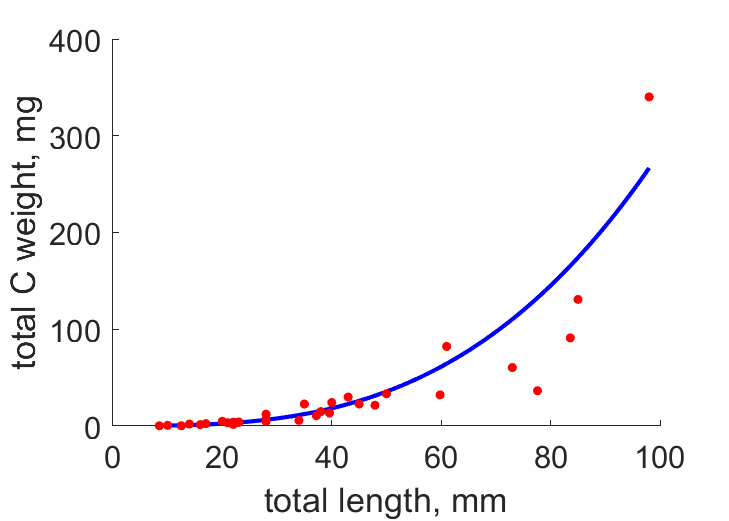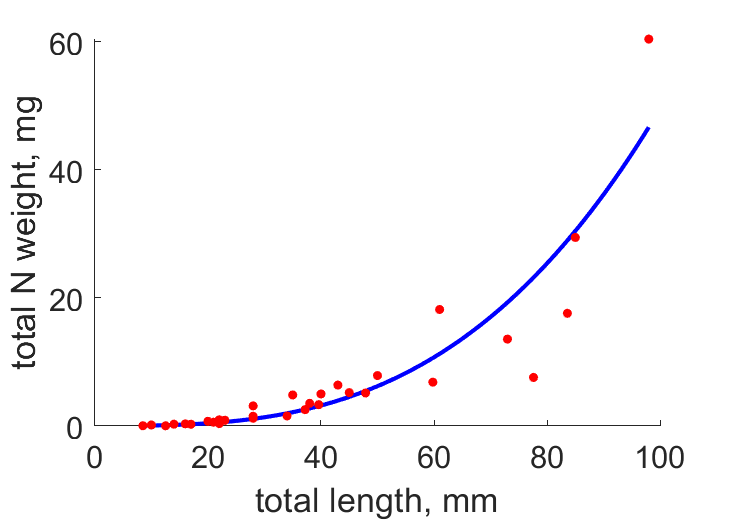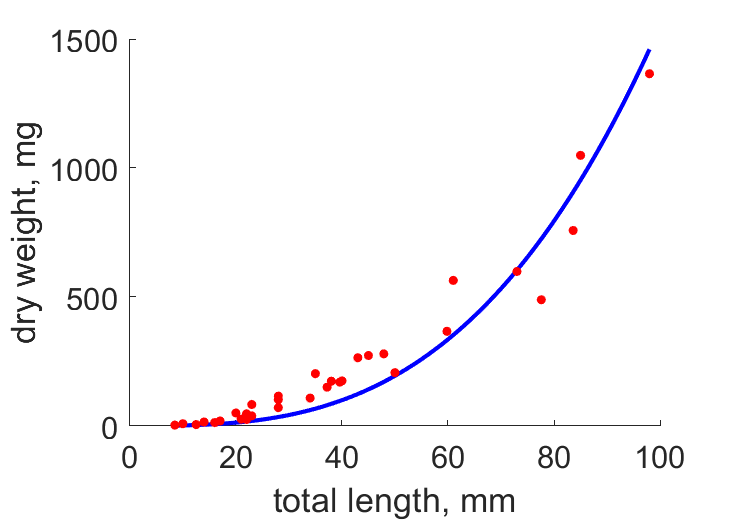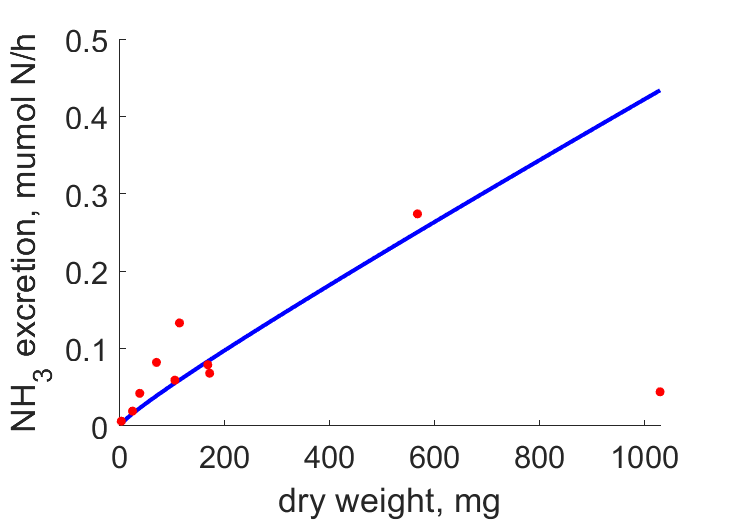Predictions & Data for this entry
| Model: abj | climate: ME | migrate: | phylum: |
| COMPLETE = 1.5 | ecozone: MS | food: biPz | class: |
| MRE = 0.232 | habitat: 0iMp | gender: Hh | order: |
| SMSE = 0.373 | embryo: Mp | reprod: O | family: |
Zero-variate data
| Data | Observed | Predicted | (RE) | Unit | Description | Reference |
|---|---|---|---|---|---|---|
| tp | 200 | 220.1 | (0.1003) | d | time since birth at puberty | guess |
| am | 365 | 365 | (5.597e-05) | d | life span | guess |
| Lp | 2 | 1.821 | (0.08927) | cm | total length at puberty | guess |
| Li | 9.8 | 9.791 | (0.000969) | cm | ultimate total length | ScolDaly2006 |
| Wwb | 0.00018 | 0.0001793 | (0.003944) | g | wet weight at birth | guess |
| Wdi | 1.366 | 1.456 | (0.06599) | g | ultimate dry weight | ScolDaly2006 |
Uni- and bivariate data
| Data | Figure | Independent variable | Dependent variable | (RE) | Reference |
|---|---|---|---|---|---|
| LWC |  | total length | total C weight | (0.4452) | ScolDaly2006 |
| LWN |  | total length | total N weight | (0.3514) | ScolDaly2006 |
| LWd |  | total length | dry weight | (0.2693) | ScolDaly2006 |
| WdJN |  | dry weight | NH_3 excretion | (0.7209) | ScolDaly2006 |
| WdJO |  | dry weight | O_2 consumption | (0.5005) | ScolDaly2006 |
Pseudo-data at Tref = 20°C
| Data | Generalised animal | Callianira antarctica | Unit | Description |
|---|---|---|---|---|
| v | 0.02 | 0.03104 | cm/d | energy conductance |
| p_M | 18 | 17.87 | J/d.cm^3 | vol-spec som maint |
| k_J | 0.002 | 0.002 | 1/d | maturity maint rate coefficient |
| k | 0.3 | 0.02962 | - | maintenance ratio |
| kap | 0.8 | 0.95 | - | allocation fraction to soma |
| kap_G | 0.8 | 0.7907 | - | growth efficiency |
| kap_R | 0.95 | 0.475 | - | reproduction efficiency |
Discussion
- Chemical pars are assumped to relate to ash-free dry mass; MaleFaga1993 report ash free dry mass over dry mass ratio of 0.263 - 0.297 with mean 0.279, which makes del_W = 3.5842
- mod_3: guessed data added to allow parameter estimation; kappa fixed at 0.95 in absence of reproduction data
Facts
- C. antarctica feeds mainly on copepods (Ref: SeJoScol2004)
- Is found is Magellan Strait and the Antarctic Ocean; C. antarctica egested little else than clear pieces of disarticulated exoskeleton (Ref: ScolDaly2006)
- The similarity in feeding incidence between autumn and winter, despite a large seasonal variability in prey abundance, suggests that other factors, such as prey patchiness, may significantly influence feeding (Ref: ScolDaly2006)
- Hermaphrodite (Ref: Wiki)
Bibliography